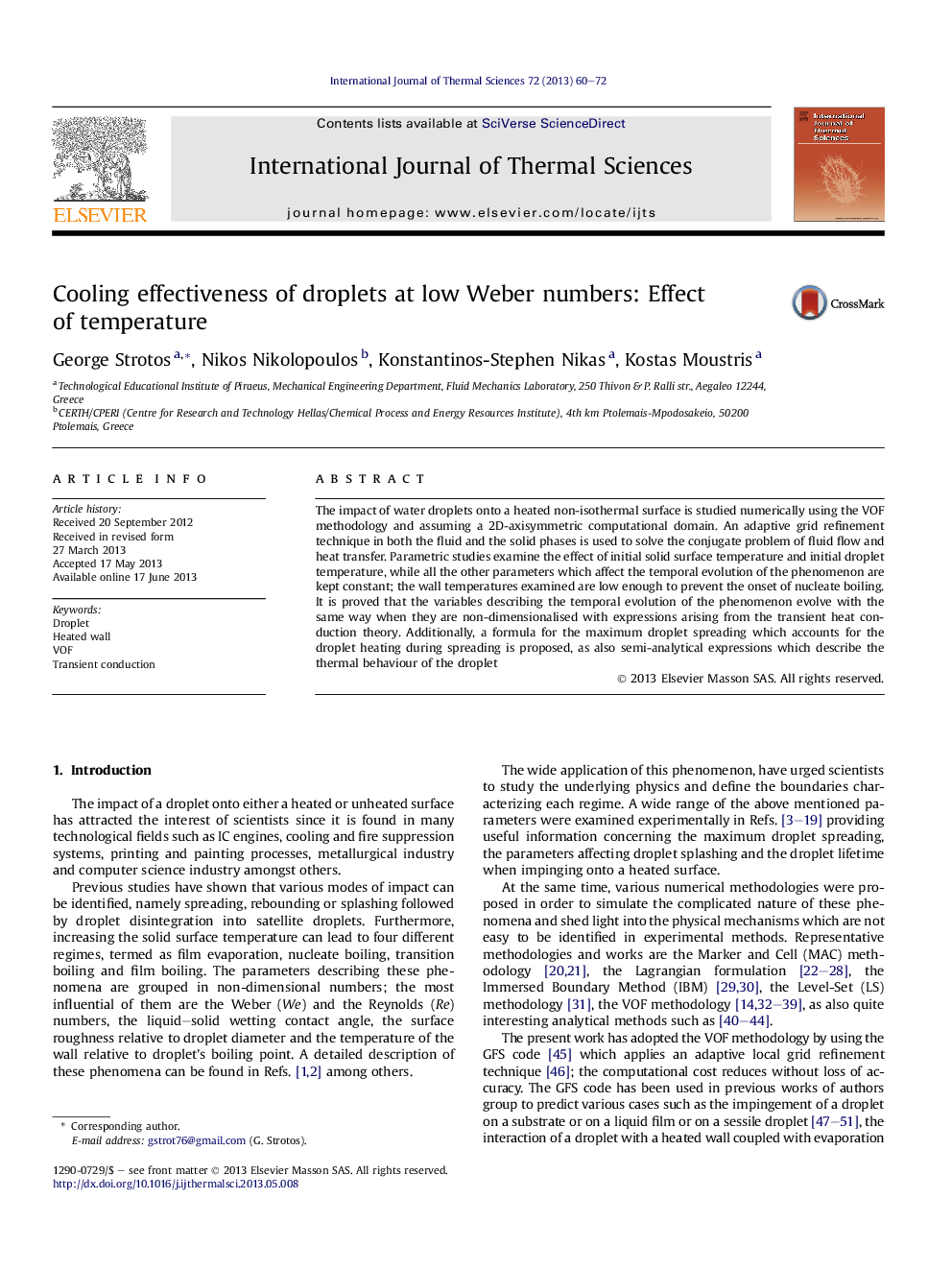| Article ID | Journal | Published Year | Pages | File Type |
|---|---|---|---|---|
| 668376 | International Journal of Thermal Sciences | 2013 | 13 Pages |
Abstract
The impact of water droplets onto a heated non-isothermal surface is studied numerically using the VOF methodology and assuming a 2D-axisymmetric computational domain. An adaptive grid refinement technique in both the fluid and the solid phases is used to solve the conjugate problem of fluid flow and heat transfer. Parametric studies examine the effect of initial solid surface temperature and initial droplet temperature, while all the other parameters which affect the temporal evolution of the phenomenon are kept constant; the wall temperatures examined are low enough to prevent the onset of nucleate boiling. It is proved that the variables describing the temporal evolution of the phenomenon evolve with the same way when they are non-dimensionalised with expressions arising from the transient heat conduction theory. Additionally, a formula for the maximum droplet spreading which accounts for the droplet heating during spreading is proposed, as also semi-analytical expressions which describe the thermal behaviour of the droplet
Keywords
Related Topics
Physical Sciences and Engineering
Chemical Engineering
Fluid Flow and Transfer Processes
Authors
George Strotos, Nikos Nikolopoulos, Konstantinos-Stephen Nikas, Kostas Moustris,
